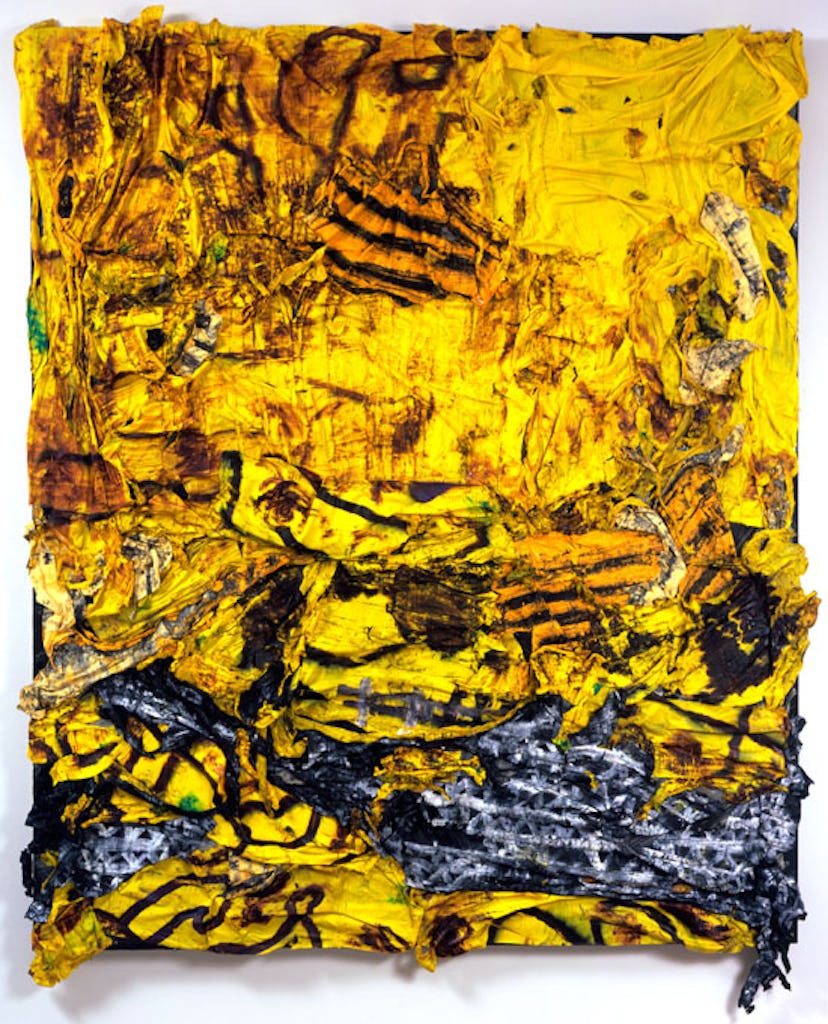Five Minutes with Artist Angel Otero
W catches up with the artist, whose latest works are on view at the Savannah College of Art Design Museum of Art.

“I’ve always liked the physicality of paint,” says the artist Angel Otero, who transforms liquid material into thick-yet-elegant layers, or “oil skins,” as he calls them. While still in grad school at the School of the Art Institute of Chicago, the Puerto Rico-born Otero was already showing his work in galleries. “I’ve been really lucky,” says the New York-based artist, 31, who folds, builds, and collages his layers on to canvas to highly sculptural effect. His latest works, inspired by the 17th century French painter Nicolas Poussin (“I’m always in a dialogue with painting and its history,” he says), are on view at the Savannah College of Art Design Museum of Art, in Georgia, where W caught up with him.
Can you describe your technique? At first it’s conventional. I have my brush, my palette, and I paint with oil on glass. Then I introduce the unconventional: I scrape off the paint in layers—what I call “oil skins”—and it becomes a three-dimensional material. The skins are still wet, so I rest them on cardboard and slide them onto a canvas like a pizza. Then I can collage the surface, take the brush to it, layer it. I never know exactly what the final results are going to be. For me it’s more of an exploration.
So you let go of a certain amount of control? Yeah. There’s a huge space for chance and accidents, which are really important. When I peel the paint off the glass, the whole thing might break apart or the imagery could totally disappear. I’ve developed my process, but sometimes I look at a finished work and I wonder, how the hell did I get here with this thing?
The oil skins have become your signature. I think there’s a lot more to work through with those. I have a lot of faith in my process. It’s the one I created and it’s what drives my interests in a way that I feel comfortable with. Painting is scary sometimes. You feel exposed out there. People tend to go more toward the materiality of my work, which obviously interests me, but the surface is also like a filter that lets me explore something more personal that I give to the viewer in an obscured way. They don’t get to read me or judge me. Anyway, I don’t like making narratives. I’ve never been good at storytelling.
You have mentioned Willem de Kooning, Franz Kline, and Jackson Pollock as influences. Who are some of the artists you’ve been looking at lately? I’ve been really into [Nicolas] Poussin. I started researching and saw that he had this passion for color and material. I realized I could create a conversation between classical and contemporary issues of painting. I want to keep up a dialogue between past and present by being loyal to what painting has been but at the same time questioning it.
As a painter, what’s been your biggest challenge? It’s difficult to introduce a new statement on painting. I don’t want my work to look systematical, because it’s not. It’s not just a cool process, it’s about asking what painting is, what it can be, and what it can’t be. I’m constantly questioning what I do.
“Angel Otero: Material Discovery,” is on view through May 5 at the SCAD Museum of Art, Savannah.